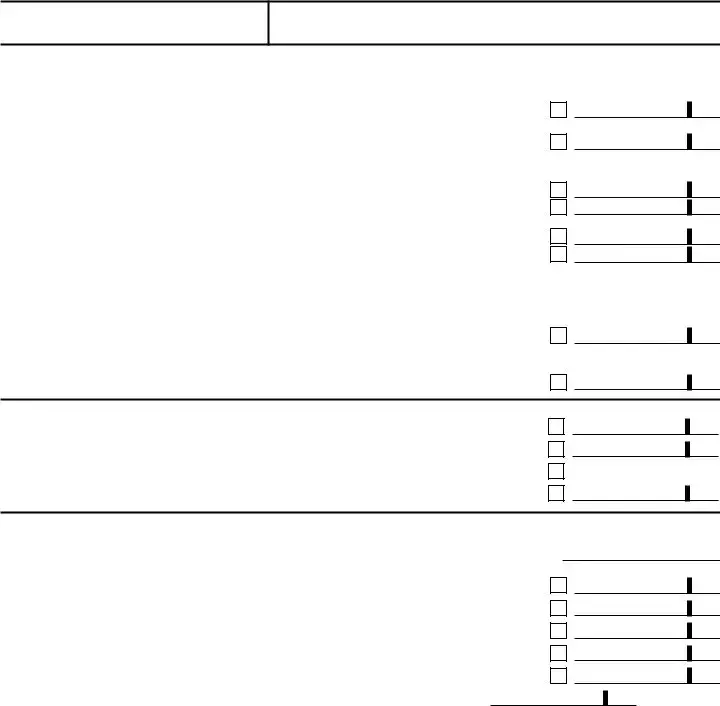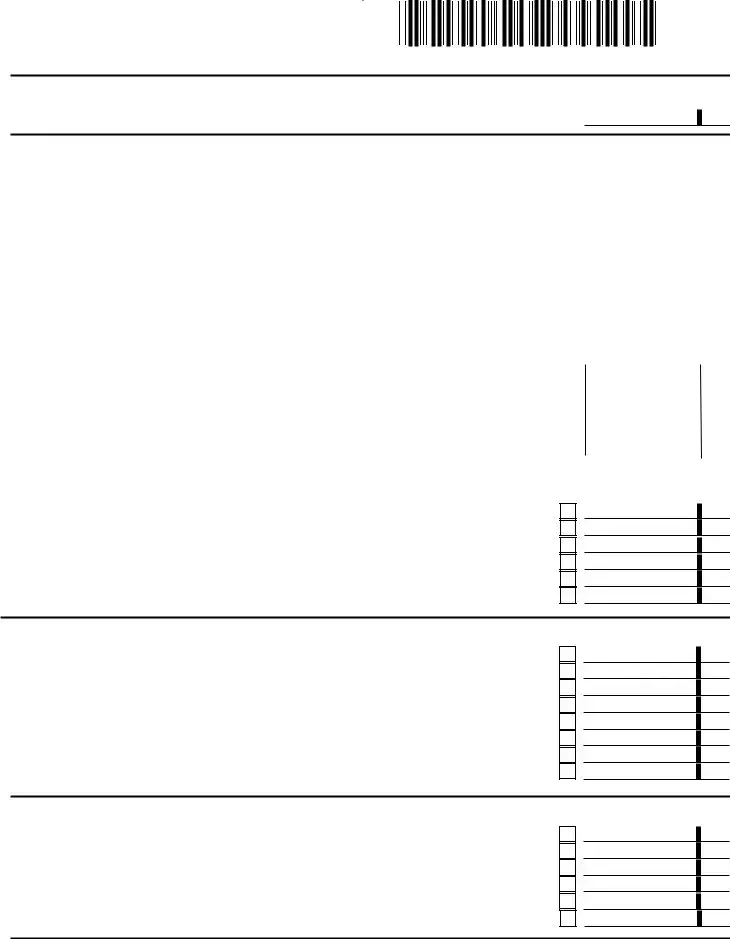PART D - CREDIT FOR AQUACULTURE OYSTER FLOATS
A credit is allowed for 100% of the amounts paid to purchase a new aquaculture oyster float that is designed to grow oysters at or under an individual homeowner’s pier. The device must be buoyant and assist in the growth of oysters for the width of the pier. The credit cannot exceed $500. In the case of a joint return, each spouse is entitled to claim the credit, provided each spouse purchases or contributes to the purchase of a float.
PART E - LONG-TERM CARE INSURANCE CREDIT
A one-time credit may be claimed against the state income tax for the payment of qualified long-term care (LTC) insurance pre- miums as defined by the IRS (Publication 502) for a policy to insure yourself, or your spouse, parent, stepparent, child or stepchild, who is a resident of Maryland.
A credit may not be claimed if:
a. the insured was covered by LTC insurance prior to July 1, 2000;
b. the credit for the insured is being claimed in this year by another taxpayer; or
c. the credit is being or has been claimed by anyone in any other tax year.
The credit is equal to the LTC premiums paid with a maximum per insured of:
Amount |
Age of Insured as of 12/31/08 |
$310 |
40 or less |
$500 |
over 40 years |
SPECIFIC INSTRUCTIONS
•Answer Questions 1 through 3. If you answered “yes” for any of the questions, no credit is allowed for that individual.
•Complete columns A through D of the worksheet for each qualifying insured individual who qualifies for the credit. If more space is required, attach a separate statement.
•Enter in Column E the amount of premiums paid for each qualifying insured individual up to the maximum for that age group.
•Add the amounts in Column E and enter the total on line 5. Also enter this amount on line 5, Part G.
PART F - CREDIT FOR PRESERVATION AND
CONSERVATION EASEMENTS
If you donated an easement to the Maryland Environmental Trust or the Maryland Agricultural Land Preservation Foundation to preserve open space, natural resources, agriculture, forest land, watersheds, significant ecosystems, viewsheds or historic prop- erties, you may be eligible for a credit if:
1.the easement is perpetual;
2.the easement is accepted and approved by the Board of Public Works; and
3.the fair market value of the property before and after the conveyance of the easement is substantiated by a certified real estate appraiser.
The credit is equal to the difference in the fair market values of the property reduced by payments received for the easement.
If the property is owned jointly by more than one individual such as a husband and wife, each individual owner is entitled to the credit based on their percentage of ownership. Individual members of a pass-through entity are not eligible for this credit. The credit amount is limited to the lesser of the individual’s state tax liability for that year or the maximum allowable credit of $5,000, per owner. In the case of a joint return each spouse must calculate their own state tax liability for limitation purposes.
You can use the rules for filing separate returns in Instruction 8 in the Resident booklet to calculate each spouse’s Maryland tax.
If the individual’s allowable credit amount exceeds the maximum of $5,000 the excess may be carried forward for up to 15 years or until fully used. Complete lines 1-6 of Part F. If you itemize deductions, see Instruction 14 in the Resident booklet.
For Line 1, enter the amount by which the fair market value of the property before the conveyance of the easement exceeds the fair market value after the conveyance as substantiated by a certified real estate appraiser, plus any carryover from the prior year.
The carryover amount can be found on Part F line 6 of Form 502CR for tax year 2007.
For additional information, contact the Maryland Environmental Trust at 410-514-7900 (www.dnr.state.md.us/met), or the Mary- land Agricultural Land Preservation Foundation at 410-841-5860.
PART G - INCOME TAX CREDIT SUMMARY
This part is to summarize parts A through F and the non-refund- able portion of Heritage Structure Rehabilitation tax credits. If the total from Part G, line 8 exceeds the state tax, the excess may not be refunded.
PART H - REFUNDABLE INCOME TAX CREDITS
Line 1 - NEIGHBORHOOD STABILIZATION CREDIT
If you live in the Waverly or Landsdowne sections of Baltimore City, or in the Hillendale, Northbrook, Pelham Woods, or Tay- lor/Dartmouth areas of Baltimore County, you may qualify for this credit. Credit for homes purchased in Baltimore City must have been applied for by December 31, 2002. Credit for homes purchased in Baltimore County must have been applied for by December 31, 2005. After certification by Baltimore City or Bal- timore County, you may claim an income tax credit equal to the property tax credit granted by Baltimore City or Baltimore Coun- ty. Enter the amount on line 1 of Part H and attach a copy of the certification.
Line 2 - HERITAGE STRUCTURE REHABILITATION TAX CREDIT
See instructions for Form 502H.
Line 3 - REFUNDABLE BUSINESS INCOME TAX CREDIT
Development Tax Credit and the Biotechnology Investment Incentive Tax Credit.
Line 4 - IRC SECTION 1341 REPAYMENT CREDIT
If you repaid an amount reported as income on a prior year tax return this year that was greater than $3,000, you may be eligible for an IRC Section 1341 Repayment credit. Attach docu- mentation. For additional information, see Administrative Release 40.
Line 5 - FORM 1041 SCHEDULE K-1 NONRESIDENT PTE TAX
If you are the beneficiary of a Trust or a Qualified Subchapter S Trust for which nonresident PTE tax was paid, you may be enti- tled to a credit for your share of that tax. Enter the amount on this line and attach both the Form 1041 Schedule K-1 for the trust (or Form 504 Schedule K-1) and a copy of the K-1 issued to the trust by the PTE.
Line 6 - Add lines 1 through 5 and enter the total on the appro- priate line of the income tax form being filed.























































 2008
2008